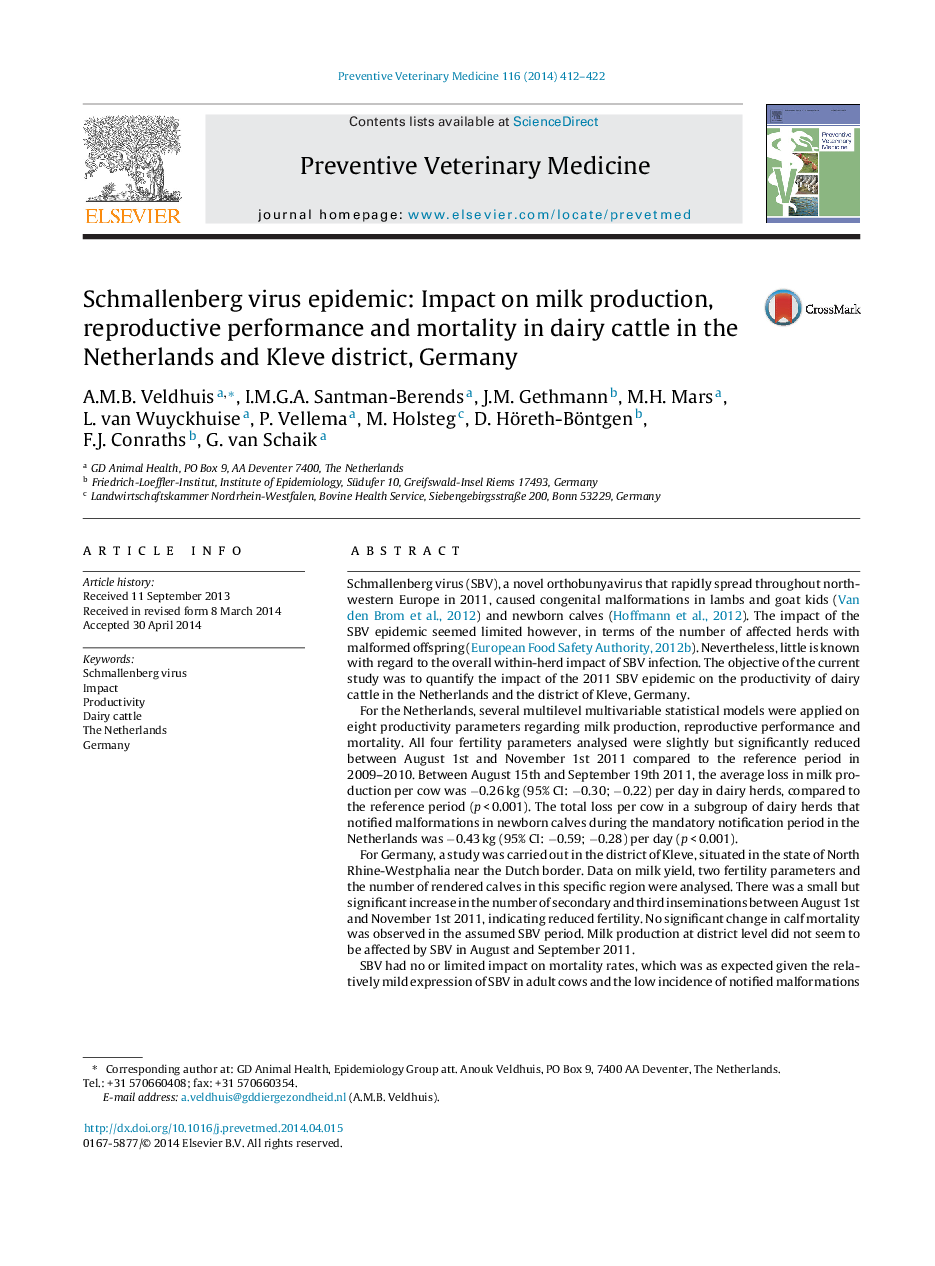| کد مقاله | کد نشریه | سال انتشار | مقاله انگلیسی | نسخه تمام متن |
|---|---|---|---|---|
| 5793403 | 1110014 | 2014 | 11 صفحه PDF | دانلود رایگان |
Schmallenberg virus (SBV), a novel orthobunyavirus that rapidly spread throughout north-western Europe in 2011, caused congenital malformations in lambs and goat kids (Van den Brom et al., 2012) and newborn calves (Hoffmann et al., 2012). The impact of the SBV epidemic seemed limited however, in terms of the number of affected herds with malformed offspring (European Food Safety Authority, 2012b). Nevertheless, little is known with regard to the overall within-herd impact of SBV infection. The objective of the current study was to quantify the impact of the 2011 SBV epidemic on the productivity of dairy cattle in the Netherlands and the district of Kleve, Germany.For the Netherlands, several multilevel multivariable statistical models were applied on eight productivity parameters regarding milk production, reproductive performance and mortality. All four fertility parameters analysed were slightly but significantly reduced between August 1st and November 1st 2011 compared to the reference period in 2009-2010. Between August 15th and September 19th 2011, the average loss in milk production per cow was â0.26 kg (95% CI: â0.30; â0.22) per day in dairy herds, compared to the reference period (p < 0.001). The total loss per cow in a subgroup of dairy herds that notified malformations in newborn calves during the mandatory notification period in the Netherlands was â0.43 kg (95% CI: â0.59; â0.28) per day (p < 0.001).For Germany, a study was carried out in the district of Kleve, situated in the state of North Rhine-Westphalia near the Dutch border. Data on milk yield, two fertility parameters and the number of rendered calves in this specific region were analysed. There was a small but significant increase in the number of secondary and third inseminations between August 1st and November 1st 2011, indicating reduced fertility. No significant change in calf mortality was observed in the assumed SBV period. Milk production at district level did not seem to be affected by SBV in August and September 2011.SBV had no or limited impact on mortality rates, which was as expected given the relatively mild expression of SBV in adult cows and the low incidence of notified malformations in newborn calves. Our results indicate that SBV had a limited impact on productivity of dairy cattle. However, the total economic impact of SBV on the ruminant industry not only consists of productivity caused losses; it is expected that international trade restrictions formed a larger part of the total economic impact.
Journal: Preventive Veterinary Medicine - Volume 116, Issue 4, 15 October 2014, Pages 412-422
